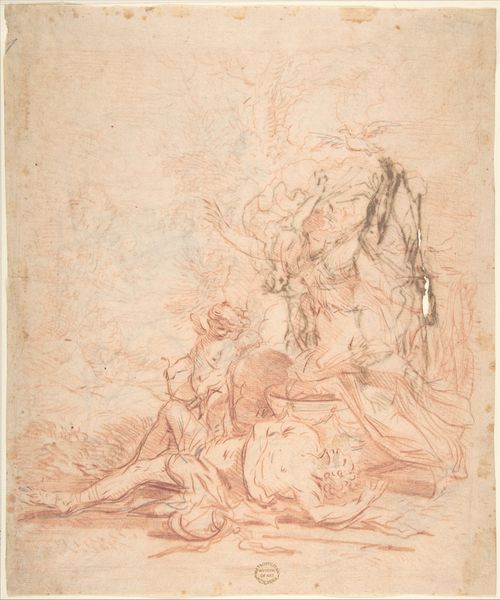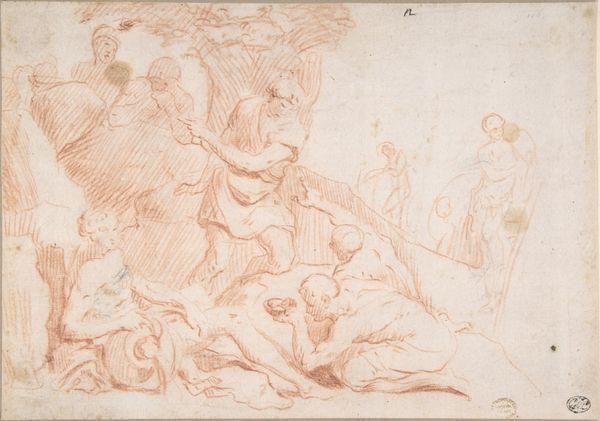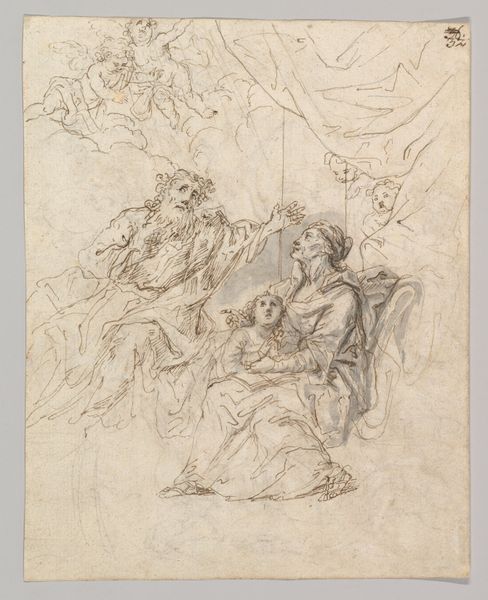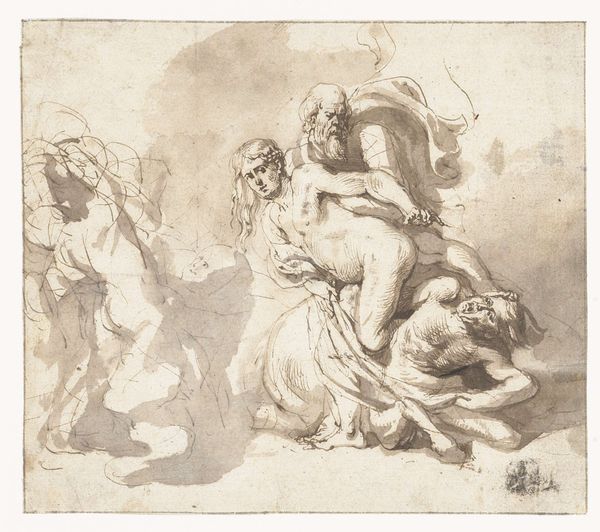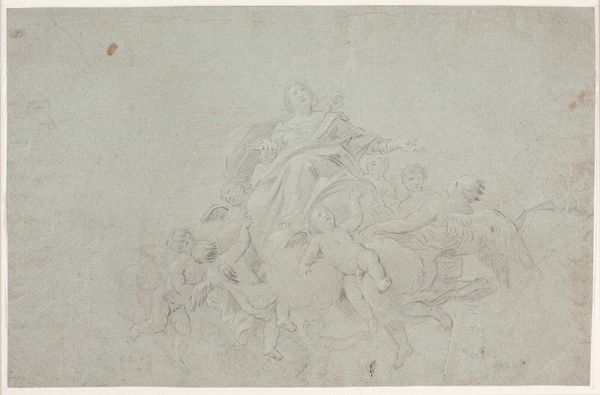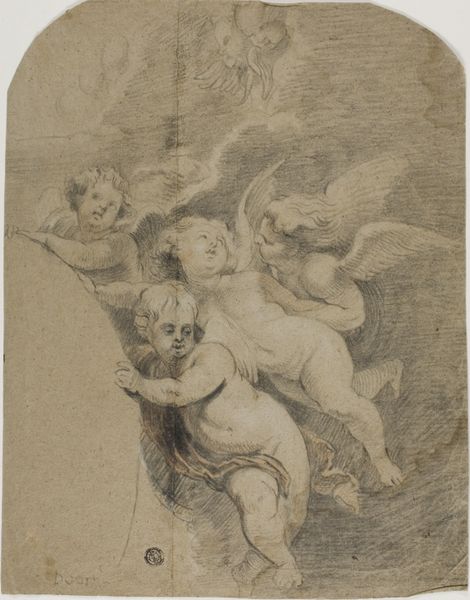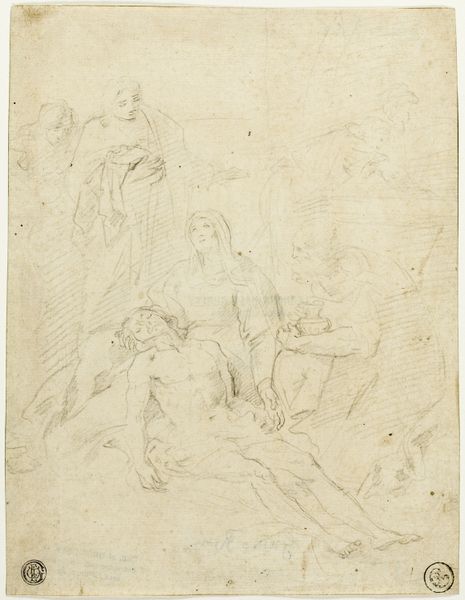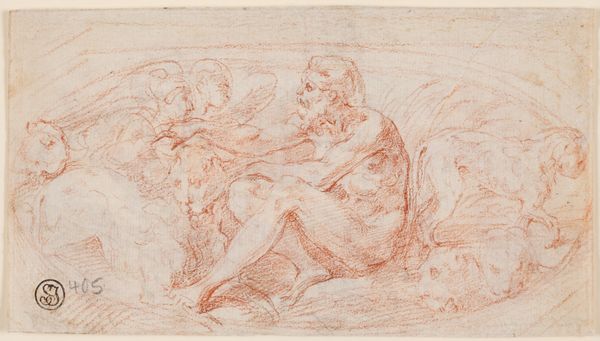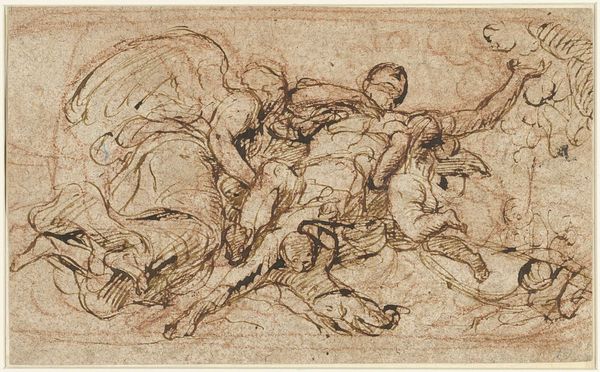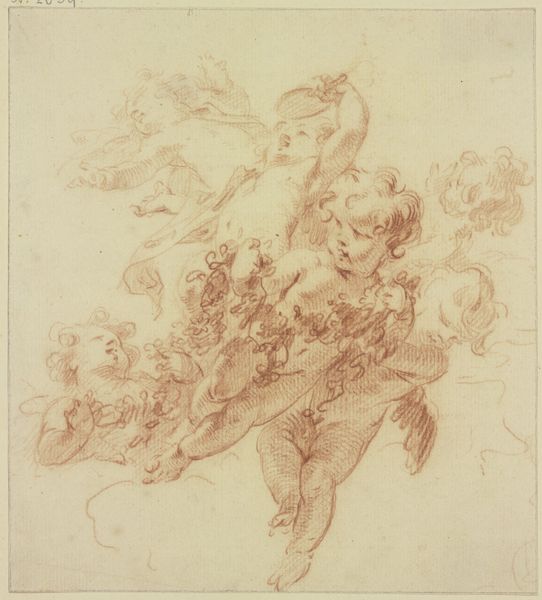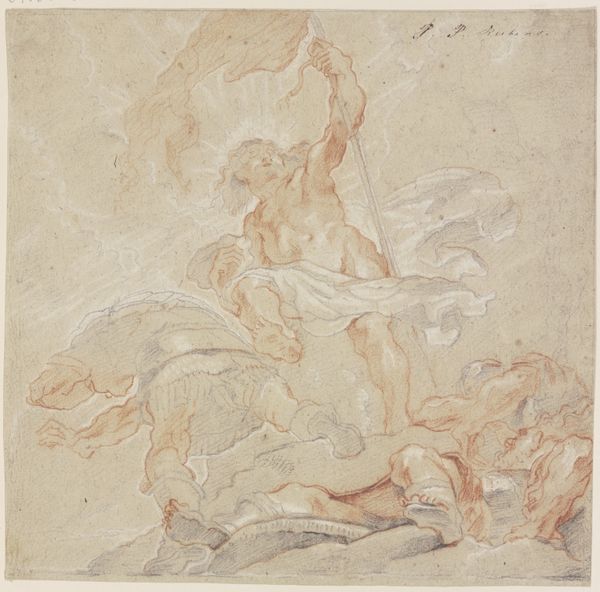
drawing, dry-media
#
portrait
#
drawing
#
baroque
#
figuration
#
dry-media
Dimensions: 8-3/4 x 6-1/4 in. (22.25 x 15.9 cm)
Copyright: Public Domain
Editor: We are looking at a drawing called "Saint Agnes and a Female Saint," dating from somewhere in the 1600s, currently held at the Met. The artist is unknown. The drawing is rendered in a warm red chalk, giving it an ethereal quality. What symbols do you notice at play here? Curator: The most immediately striking is Saint Agnes's constant companion: the lamb. It's a powerful emblem, isn't it? Across centuries and cultures, the lamb symbolizes innocence, purity, and sacrifice. Think about its appearance in both pagan and Christian traditions - what continuities do you see? Editor: So the lamb links Saint Agnes to these earlier symbolic frameworks...how might that impact a 17th century audience viewing the work? Curator: Precisely. In a period grappling with religious reforms and burgeoning scientific thought, this drawing, with its consciously archaic symbolism, may evoke a longing for established truths, a yearning for simpler, divinely ordained understanding. The cloud-like formations beneath them, nearly obscuring cherubic figures, are not simply compositional elements, but represent an emotional state -- the dreamlike distance from reality that these saints embodied through religious ecstasy. Does that register with you? Editor: It does, I am starting to understand how the familiar religious images serve as an anchor amidst uncertainty. It gives an almost mythical, legendary feel. Curator: And observe how the unidentified saint seems almost like Agnes’s reflection. The mirroring highlights the universal aspiration toward sanctity and how specific iconic emblems of holy figures communicate that collective desire. What are your overall thoughts? Editor: I hadn’t thought about them being mirrored, now I do! It makes me consider not just Saint Agnes’s individual sainthood, but its accessibility through universally recognizable symbols. I now appreciate the piece’s layered connection between cultural memory, individual devotion, and an entire worldview. Curator: Absolutely! It's the emotional reverberation of symbols, handed down and constantly reinterpreted, that makes religious artwork so compelling.
Comments
No comments
Be the first to comment and join the conversation on the ultimate creative platform.
